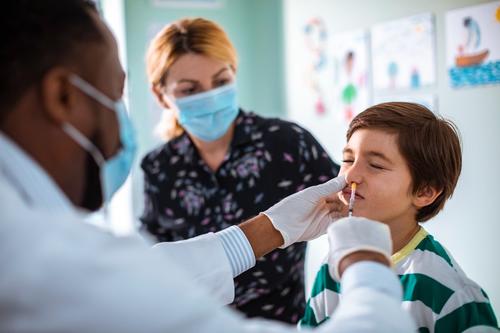
According to the U.S. Centers for Disease and Prevention (CDC), influenza viruses are most common during the fall and winter. Last year — due to physical distancing and other public COVID-19 prevention measures — the U.S. had a lesser flu season than normal. This fall, health experts are anticipating the flu season may return to its normal transmission rate or may be more severe as society returns to normal in-person functions.
For National Immunization Awareness Month, Ann Philbrick with the University of Minnesota talks about the flu vaccine, the health benefits of getting routine immunizations, and prevention measures people can take during this upcoming flu season.
Q: What is the purpose of the flu vaccine and who should receive it?
Prof. Philbrick: Simply put, the flu vaccine helps to prevent influenza. It contains inactive particles of the flu, and when introduced into the body, the body develops an immune response to those particles to fight them off in the future. Everyone ages six months and older should get the flu vaccine unless they have been told they should not by a medical provider. People with chronic medical conditions — such as diabetes — those who are pregnant, and those over 65 or younger than five years should really make an effort to get the flu vaccine annually.
Q: What are the health benefits of getting the flu vaccine?
Prof. Philbrick: First and foremost, the flu vaccine helps prevent getting influenza in the first place. Additionally, those who receive the flu shot, and do end up getting influenza, often have milder symptoms. Finally, it can also help prevent influenza in the people around you, including those with a weakened immune system.
Q: Where can people get the flu vaccine?
Prof. Philbrick: The two most common places to get the influenza vaccine are your primary physician’s office and at a community pharmacy. Sometimes workplaces will also have vaccination clinics, where they provide the vaccine to a lot of people.
Q: Besides receiving vaccines, what are other sanitary and prevention practices people can apply during the flu and cold season?
Prof. Philbrick: The best way to stop the spread of colds and flu during influenza season is to stay home if you are not feeling well. If you must leave the house, be sure to wear a mask to decrease transmission to others. Additionally, regular hand washing, or use of hand sanitizer is also recommended, as well as immediately disposing of used tissues.
Q: How are you furthering the public understanding of routine vaccines and daily sanitary practices?
Prof. Philbrick: I like to promote the pharmacist as a valuable vaccine resource as primary care providers, as pharmacists can sometimes be more accessible. At the University of Minnesota, I teach the next generation of pharmacists about vaccine-preventable diseases so they can become advocates.
Ann Philbrick, PharmD, is an associate professor in the College of Pharmacy and the Medical School on the Twin Cities campus. Her expertise in pharmaceutical care encompasses routine immunizations, asthma, chronic obstructive pulmonary disease (COPD), comprehensive medication management, medical cannabis, diabetes, and hypertension. Philbrick’s research interests are refugee healthcare, experiential education of pharmacy students, and the role of a pharmacist in an interprofessional setting.
-30-
About “Talking...with U of M”
“Talking...with U of M” is a resource whereby University of Minnesota faculty answer questions on current and other topics of general interest. Feel free to republish this content. If you would like to schedule an interview with the faculty member or have topics you’d like the University of Minnesota to explore for future “Talking...with U of M,” please contact University Public Relations at [email protected].




